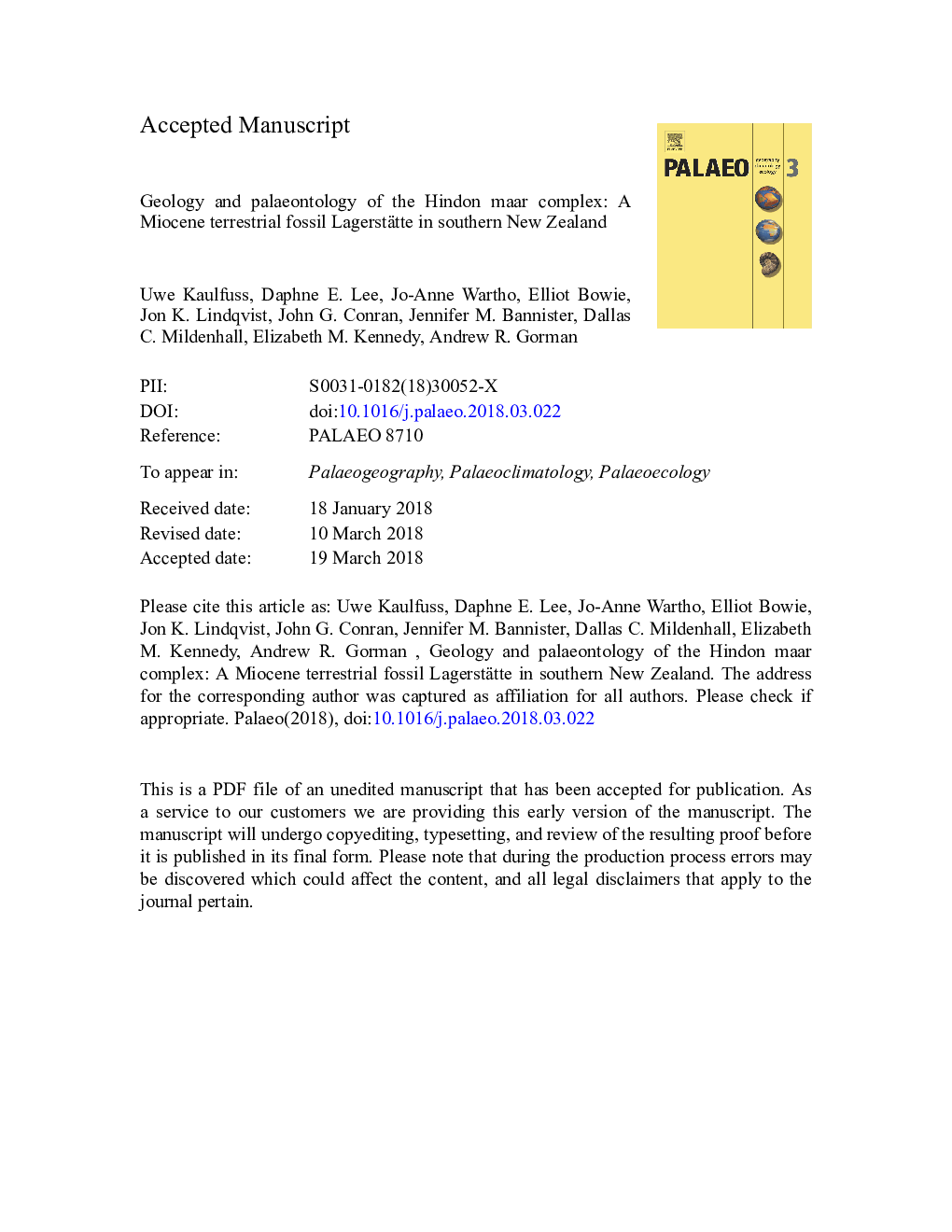| کد مقاله | کد نشریه | سال انتشار | مقاله انگلیسی | نسخه تمام متن |
|---|---|---|---|---|
| 8868215 | 1622092 | 2018 | 49 صفحه PDF | دانلود رایگان |
عنوان انگلیسی مقاله ISI
Geology and palaeontology of the Hindon Maar Complex: A Miocene terrestrial fossil Lagerstätte in southern New Zealand
دانلود مقاله + سفارش ترجمه
دانلود مقاله ISI انگلیسی
رایگان برای ایرانیان
کلمات کلیدی
موضوعات مرتبط
مهندسی و علوم پایه
علوم زمین و سیارات
فرآیندهای سطح زمین
پیش نمایش صفحه اول مقاله

چکیده انگلیسی
This paper highlights the geology, biodiversity and palaeoecology of the Hindon Maar Complex, the second Miocene Konservat-Lagerstätte to be described from New Zealand. The Lagerstätte comprises four partly eroded maar-diatreme volcanoes, with three craters filled by biogenic and highly fossiliferous lacustrine sediments. The exceptionally well-preserved and diverse biota from the site is derived from a mid-latitude Southern Hemisphere lake-forest palaeoecosystem, including many fossil taxa not previously reported from the Southern Hemisphere. The most common macrofossils are leaves of Nothofagus, but the flora also includes conifers, cycads, monocots (such as Ripogonum and palms), together with Lauraceae, Myrtaceae and Araliaceae leaves and flowers. The small maar lakes were surrounded by Nothofagus/podocarp/mixed broadleaf forest growing under humid, warm temperate to subtropical conditions. The fossil fauna comprises insects in the orders Odonata, Hemiptera, Thysanoptera, Coleoptera, Diptera, Hymenoptera and Trichoptera, and the fish assemblage includes a non-migratory species of the Southern Hemisphere Galaxias (Galaxiidae) and a significant new record of the freshwater eel Anguilla (Anguillidae). The fossil assemblage also includes the first pre-Quaternary bird feathers from New Zealand and abundant coprolites derived from fish and volant birds, presumably waterfowl. Palynomorph analysis and a 40Ar/39Ar age of 14.6â¯Ma obtained from basanite associated with the maar complex indicate that the Hindon Maar Complex is of mid-Miocene age (Langhian; New Zealand local stage: Lillburnian). It thus provides a new and unique perspective on Neogene terrestrial biodiversity and biogeography in the Australasian region, around the end of the mid-Miocene thermal optimum and prior to late Miocene-Pleistocene climate cooling episodes when many warm-temperate and subtropical forest components became extinct in New Zealand.
ناشر
Database: Elsevier - ScienceDirect (ساینس دایرکت)
Journal: Palaeogeography, Palaeoclimatology, Palaeoecology - Volume 500, 1 July 2018, Pages 52-68
Journal: Palaeogeography, Palaeoclimatology, Palaeoecology - Volume 500, 1 July 2018, Pages 52-68
نویسندگان
Uwe Kaulfuss, Daphne E. Lee, Jo-Anne Wartho, Elliot Bowie, Jon K. Lindqvist, John G. Conran, Jennifer M. Bannister, Dallas C. Mildenhall, Elizabeth M. Kennedy, Andrew R. Gorman,